Talking Spread COVID-19 CFD Simulation, ANSYS Fluent Training
$100.00 $50.00 Student Discount
- The problem numerically simulates Talking Spread COVID-19 using ANSYS Fluent software.
- We design the 3-D model by the Design Modeler software.
- We Mesh the model by ANSYS Meshing software, and the element number equals 724076.
- We perform this simulation as unsteady (Transient).
- We use the discrete phase model (DPM) to define particle virus dispersion.
- We use a Profile to define virus particles’ velocity and mass flow rate.
To Order Your Project or benefit from a CFD consultation, contact our experts via email (info@mr-cfd.com), online support tab, or WhatsApp at +44 7443 197273.
There are some Free Products to check our service quality.
If you want the training video in another language instead of English, ask it via info@mr-cfd.com after you buy the product.
Description
Description
In this project, the ability of coronavirus particles to propagate at a distance less than a social distance via talking has been simulated using ANSYS Fluent software. We perform this CFD project and investigate it by CFD analysis.
Therefore, it has been tried to simulate the release of virus particles from a Coronavirus patient’s mouth while talking and transmitting it to another person in a specific space (social distancing).
The present model is designed in three dimensions using Design Modeler software. The model’s geometry includes a computational space measuring 1.6 m * 2 m * 2.6 m in which two people are facing each other at a distance of 80 cm.
One of these two people is designed as a patient, so the patient’s mouth is defined as the source of the virus spread caused by talking.
The meshing of the model has been done using ANSYS Meshing software. The element number is 724076.
Also, a transient solver has been used due to the nature of the project (i.e., particle/virus dispersion).
Talking Methodology
This study aims to investigate the ability of virus particles to propagate and transmit at a distance less than a social distance. For the present simulation, the discrete phase model (DPM) is used; Because this model allows us to study a mass of particles discretely or bit by bit in a continuously fluid space.
Due to this model’s choice, the virus particles secreted from the patient’s mouth are considered a discrete phase. The open airflow in the computational area is regarded as a continuous phase.
The type of discrete phase behavior will be time-dependent and with a time step of 0.001 s (by activating the unsteady particle tracking mode). After activating the discrete phase model, the Injection process must be defined, determining the type and quality of discrete particles injected into the model.
In this model, the emitted particles are defined as the Inert type, and the injection type is surface and is done through the surface of the patient’s mouth.
These virus particles have a constant diameter of 0.000001 m and a temperature of 310 K, which are spread between 0 s and 20 s. A specific Profile has been used to define virus particles’ velocity and mass flow rate.
This profile shows the velocity and flow rate of the emitted particles when speaking; Thus, these virus particles are removed from the patient’s mouth in a Transient manner.
The particle velocity profile is defined as a sinusoidal function with a maximum velocity of 0.33 m/s, and the particle flow rate is determined by a specific ratio to the particle velocity.
Also, the RNG k-epsilon model and energy equation are enabled to solve the turbulent fluid equations and to calculate the temperature distribution inside the domain, respectively.
Talking Conclusion
At the end of the dissolution process, we obtain the particle tracking of the virus particles at different time intervals of the simulation process. This particle sequence is based on the residence time and the velocity of the particles.
According to the simulation results, the virus particles were expelled from the patient’s mouth in the first 20 s. In the second 20 s, only the particles in the space between the patient and the healthy person continue their transitional movement.
According to the results, we conclude that by talking to the patient without a mask or shield for 20 s, these virus particles transmit to a healthy person after 40 s and expose him to receiving virus particles.
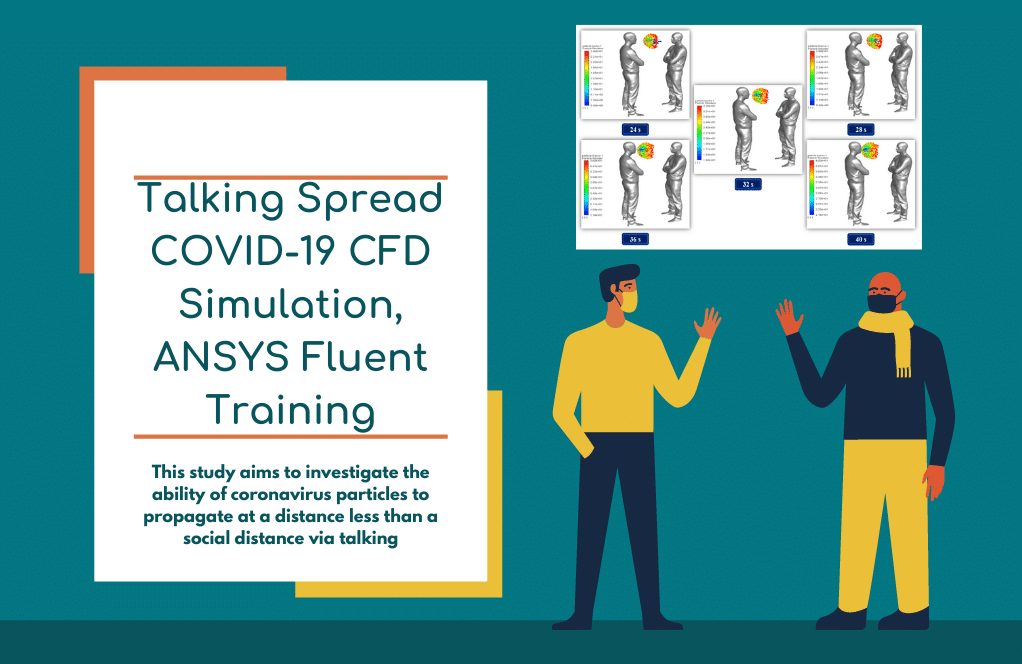
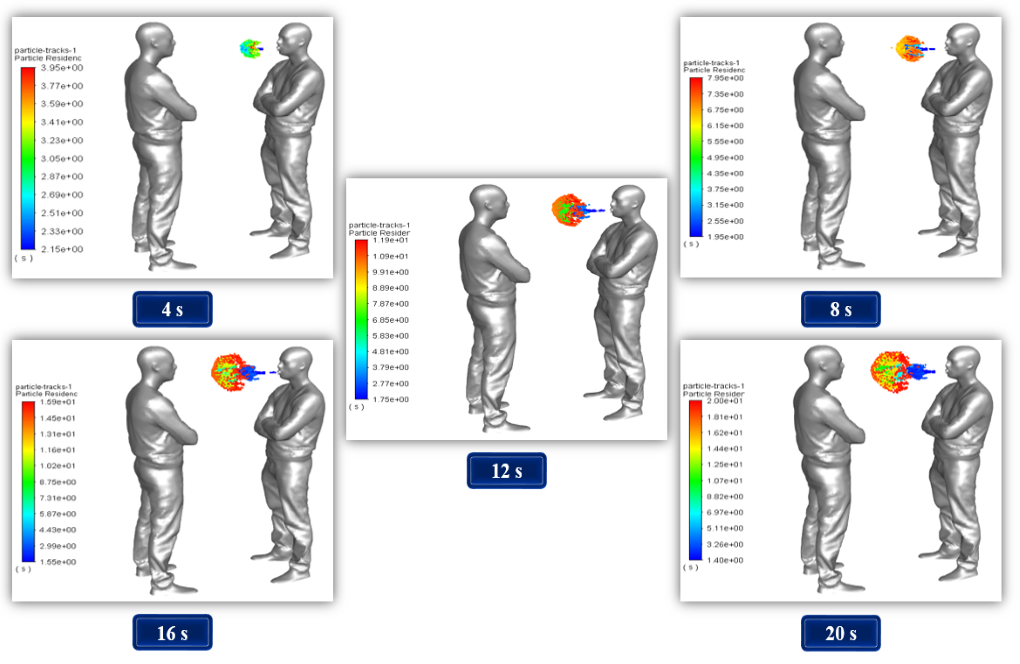
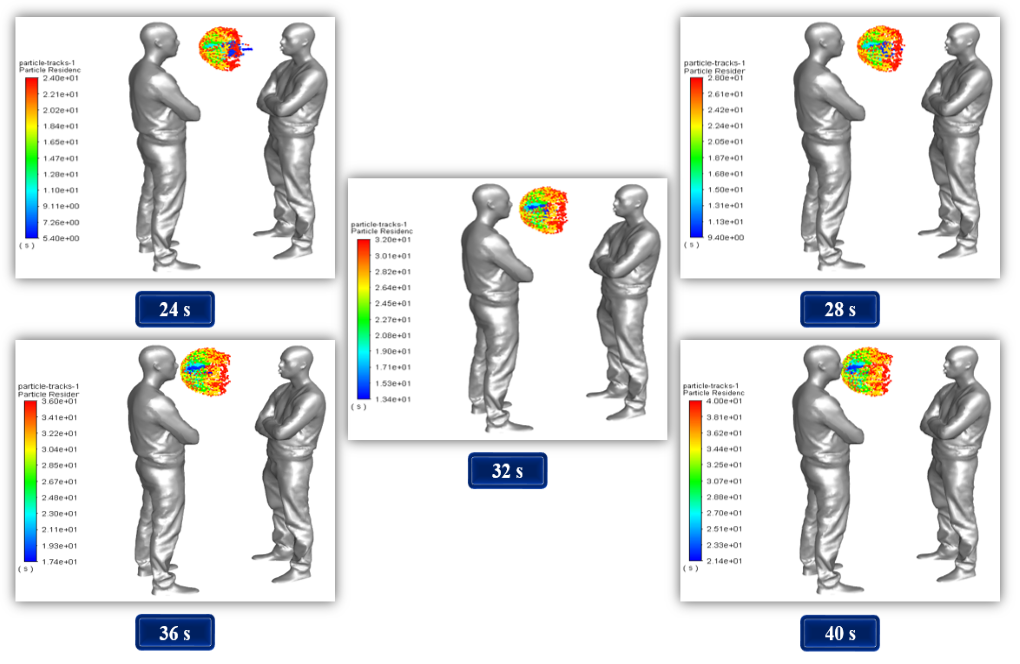
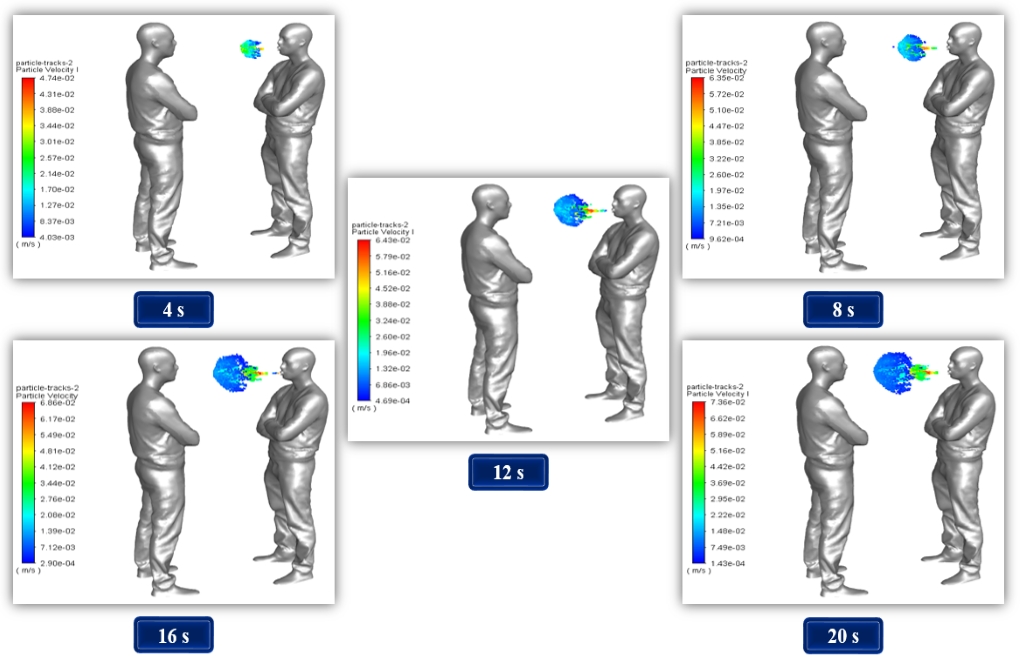
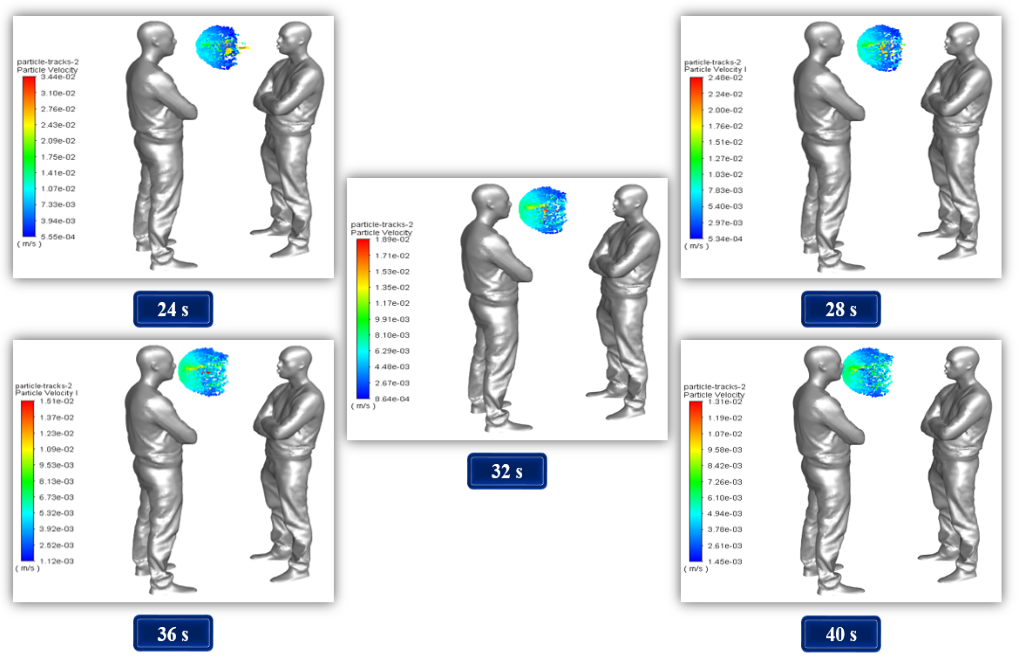

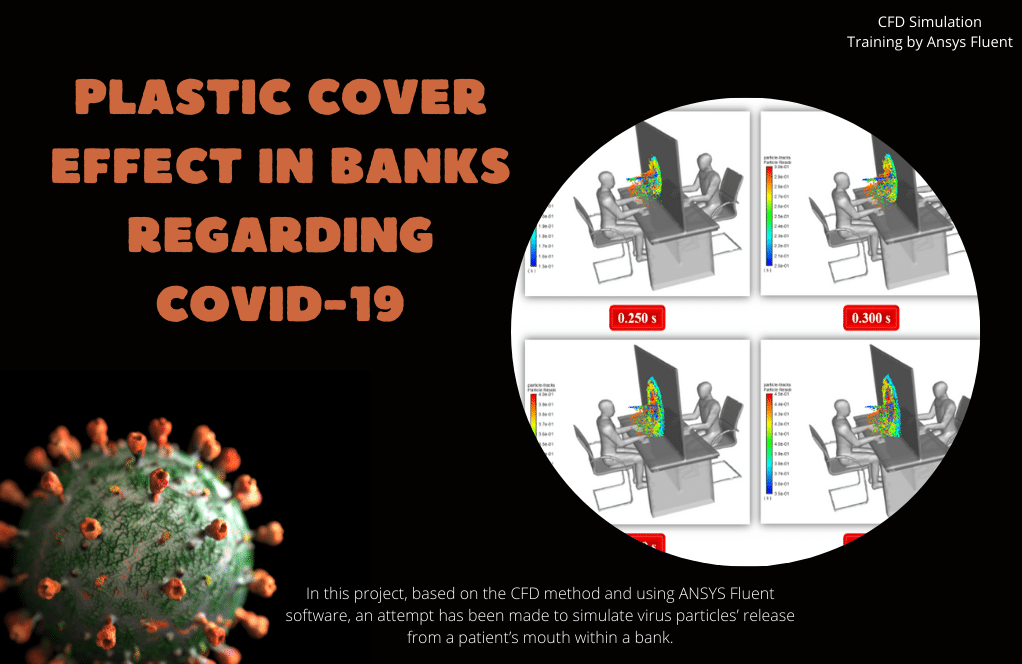
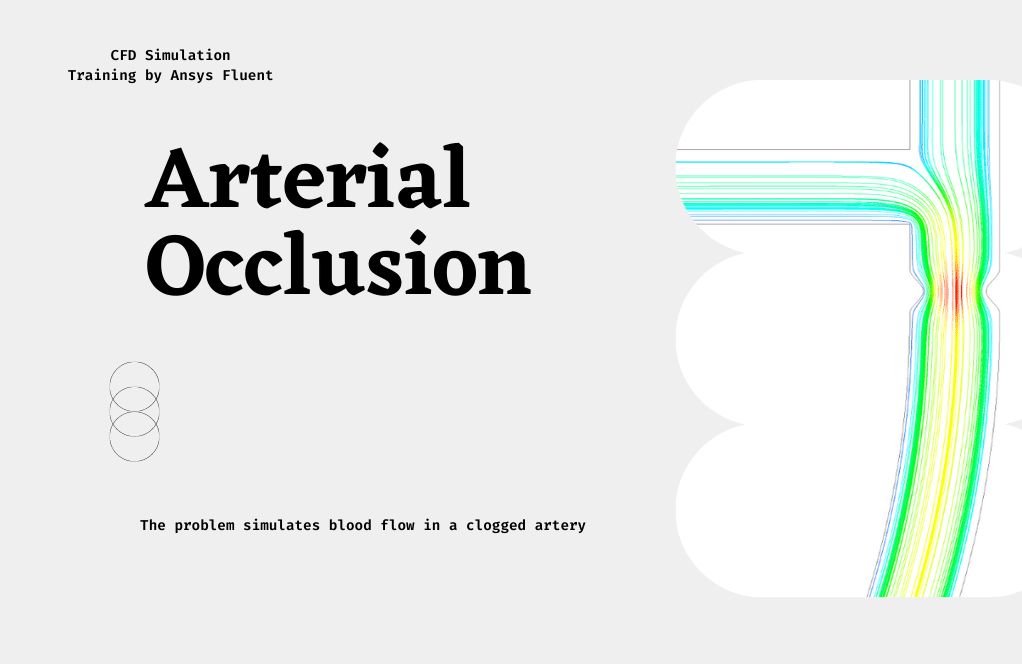
Kaya Johnston –
The explanation is very informative! What profile was used for the virus particle velocity and mass flow rate during talking?
MR CFD Support –
In this project, a specific profile has been used for defining the virus particles’ velocity and mass flow rate during the simulation of talking. This profile represents a sinusoidal function for the particle velocity with a maximum of 0.33 m/s. The particle flow rate is directly related to the particle velocity, set by a predefined ratio to adequately represent the dynamics of virus particle emission while talking.
Yessenia Klocko –
The simulation you performed seems fascinating. Can you tell me how airflow from coughing or sneezing could be introduced into the simulation to see the impact on particle dispersion compared to just talking?
MR CFD Support –
To include airflow from coughing or sneezing, additional simulations can be set up with the modified velocity and mass flow rate profiles reflecting the more forceful expulsion of air and particles. COugh and sneeze simulations typically have higher peak velocities and expel a larger number of particles in a shorter period compared to talking. This can be modeled in ANSYS Fluent using similar methodologies but adjusting the Injection properties to replicate the speed and quantity of expelled droplets from coughs or sneezes. The discrete phase model (DPM) will remain suitable for tracking these differences in airflow and particle dispersion.
Ignacio D’Amore –
I’m very impressed with how the transmission of virus particles has been simulated. Great work on highlighting the detailed spread mechanism!
MR CFD Support –
Thank you for your kind words! We pride ourselves on our commitment to delivering detailed and informative simulations that can add valuable insights into complex processes like virus particle transmission. We’re glad the simulation met your expectations and was able to clearly demonstrate the mechanism of spread. If you have any further questions or if there’s anything else you’d like to learn, don’t hesitate to reach out!
Sonia Legros –
I’m really intrigued by the DPM setup in the research. Is the behaviour of coughing and talking particles different in the CFD modeling, and if so, how is it accounted for when simulating virus spread?
MR CFD Support –
Yes, the behavior of coughing and talking particles can be different due to the varying force, speed, and dispersion patterns during the emission. In CFD modeling for virus spread, this is accounted for by adjusting the particle injection profiles. For coughing, particles would have a higher velocity and possibly larger mass flow rate considering the forceful expulsion of air from the lungs. Whereas for talking, the velocity is lower with generally fewer particles expelled. The DPM setup takes this into account by allowing detailed injection profiles mimicking the differences in particle release between coughing and talking, using time-stepping and transient simulations to capture the behavior of virus particles over time.
Lily Farrell –
The explanation mentions using a transient particle tracking mode. Can you clarify how accounting for transient behavior impacts the results?
MR CFD Support –
In this simulation, using the transient particle tracking mode allows us to capture the temporal changes in particle motion, such as changes in velocity, direction, and spread over time. By accounting for the transient behavior, we get a more accurate depiction of how virus particles disperse from the patient’s mouth while talking. This can reveal how quickly particles reach the healthy person and the concentration of particles at any given moment, which is crucial for understanding the transmission risk in a dynamic scenario.
Dr. Richard Stroman V –
The training seems quite thorough! How does the choice of the discrete phase model enhance the simulation of virus particle propagation in this case?
MR CFD Support –
By opting for the Discrete Phase Model (DPM), we benefit from the ability to accurately track and analyze the individual aerosolized virus particle trajectories within a continuous airflow field. This captures the transient and potentially stochastic pathways particles might undergo due to various physical interactions with the continuous phase, thus giving us a deeper insight into how COVID-19 could spread in the scenario you have described.